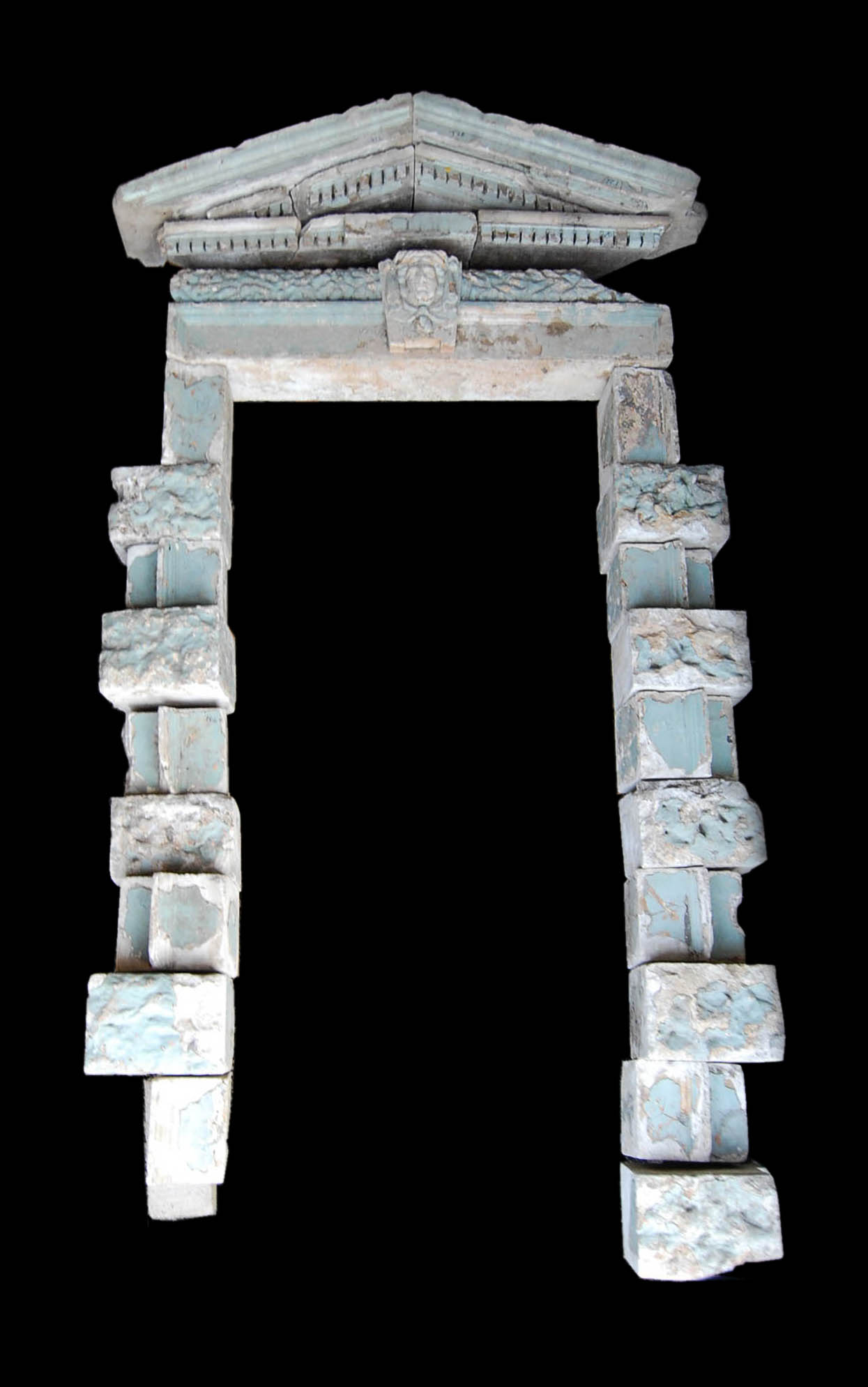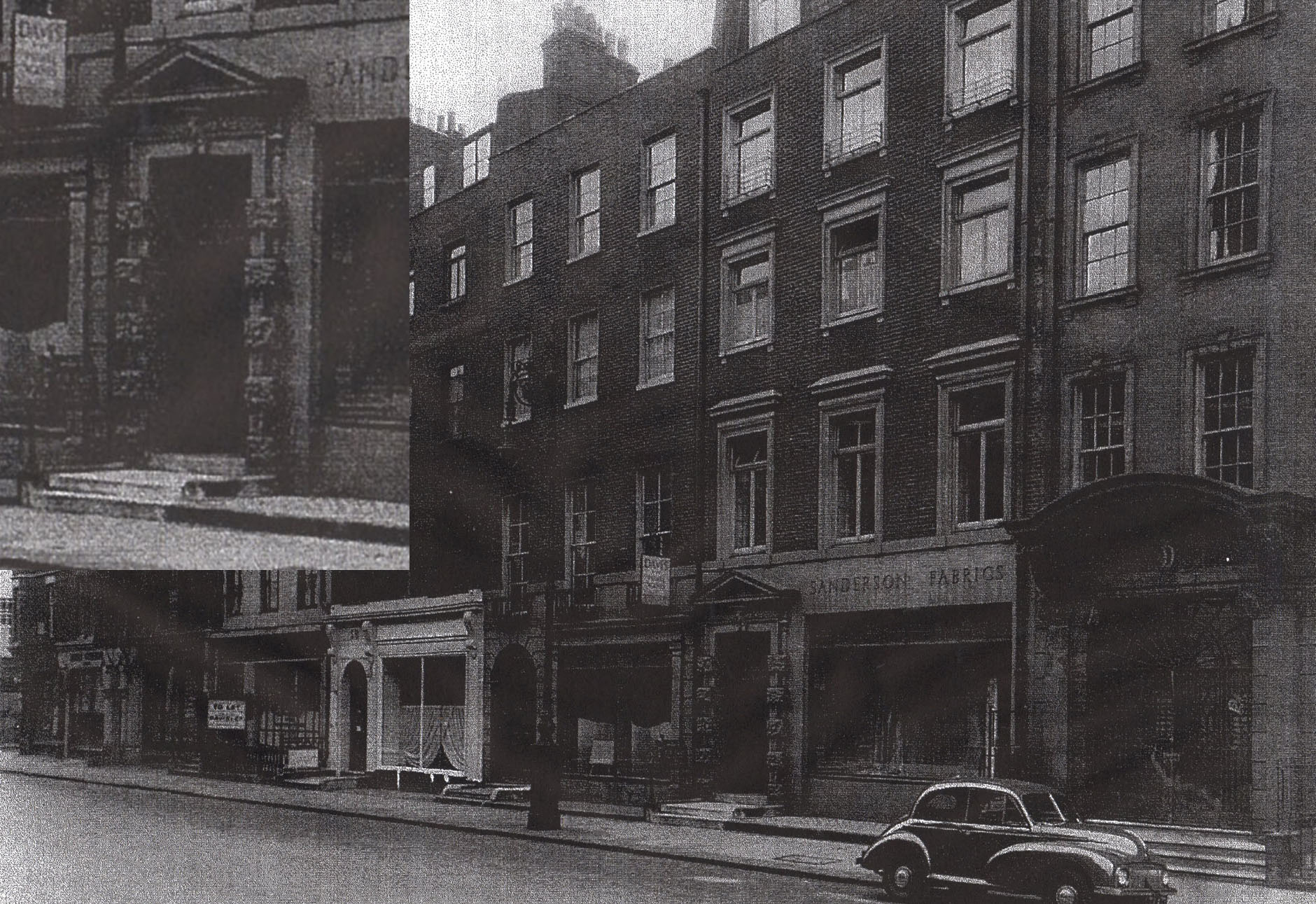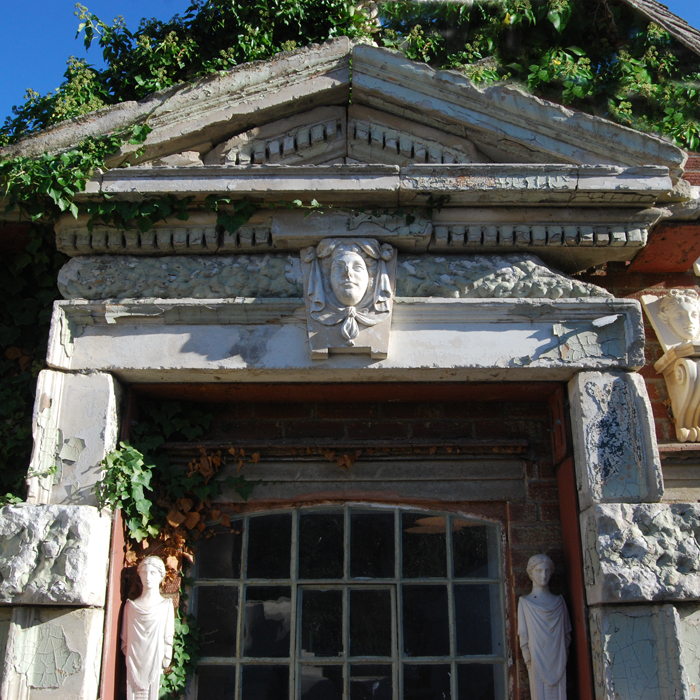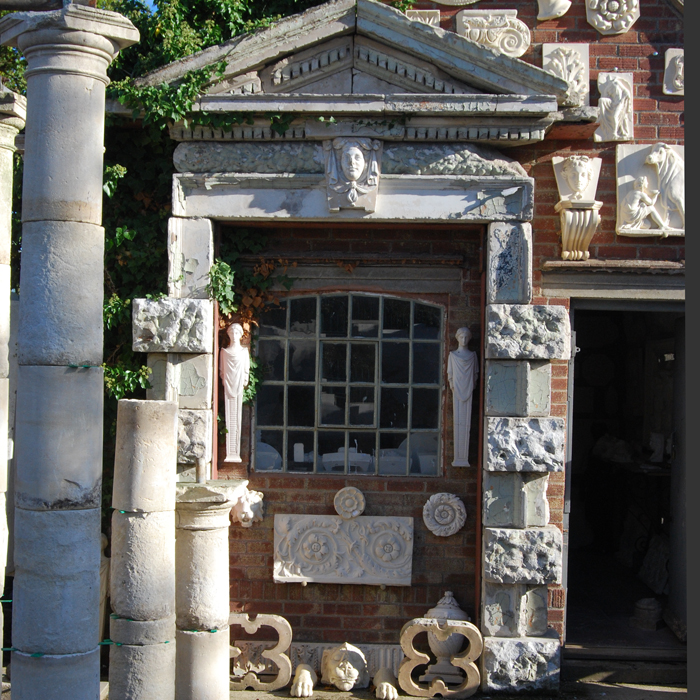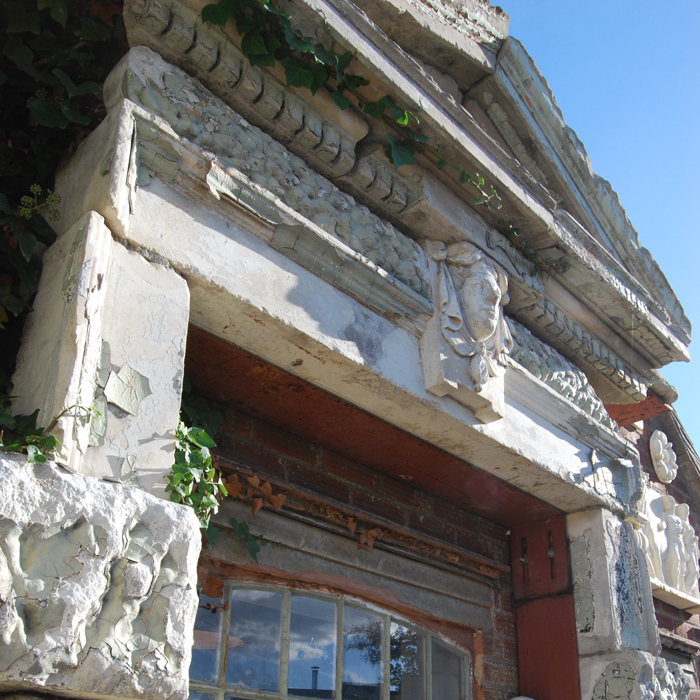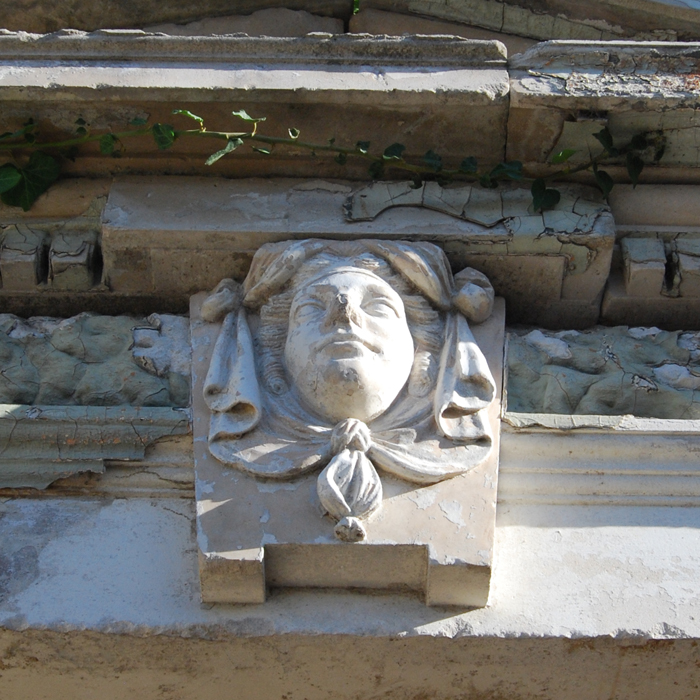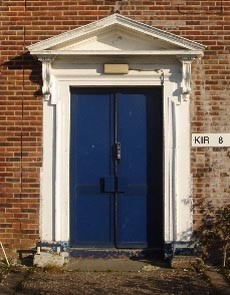No products in the basket.
Archived Stock - This item is no longer available
Sir William Chambers’ Doorcase
An important carved Portland Stone doorcase c.1769, by Chambers (1723-1796) for his own house in Berners Street Westminster
the triangular pediment with dentil mouldings above the rusticated cushion moulded frieze centred by a keystone in Coade Stone modelled in relief with a female mask, the jambs constructed with alternating rusticated quoins,
SOLD OUT
In stock
Sir William Chambers (1723-96) is one of the most revered of Georgian neo-classical architects. In his early career he was appointed architectural tutor to the Prince of Wales, later George III. In 1766, he became Architect to the King, (this being an unofficial title, rather than an actual salaried post with the Office of Works). He worked for Augusta, Dowager Princess of Wales building exotic garden buildings at Kew (the pagoda is his), and in 1757 he published a book of Chinese designs which had a significant influence on contemporary taste. He developed his Chinese interests further with his Dissertation on Oriental Gardening (1772), a fanciful elaboration of contemporary English ideas about the naturalistic style of gardening in China.
His more serious and academic Treatise on Civil Architecture published in 1759 proved influential on builders; it went into several editions and was still being republished in 1862. It dealt with the use of the classical orders, and gave suggestions for decorative elements, rather than dealing with construction and planning; for its third edition it was retitled A Treatise on the Decorative Parts of Civil Architecture. It included ideas from the works of many 16th- and 17th-century Italian architects then still little known in Britain. His influence was also transmitted through a host of younger architects trained as pupils in his office, including Thomas Hardwick (1752–1825).
His output was prolific – he undertook numerous prestigious architectural projects in London, the Shires, Ireland, Scotland and Sweden, and even designed the Coronation Coach – used by the royal family to this day. His magnus opus was Somerset House on the Strand over-looking the Thames – a vast project that he was involved with from its outset in 1766 – fully taking over the reins of design and construction in 1775.
He was working on Somerset House when his Berners Street development got underway. It comprised a street of handsome houses on a large scale. Incorporated in the terraces was his own house – and this doorcase was for that house. The terrace survived until 1941 when it was badly bomb-damaged. The doorcase was then salvaged and tucked away in the cellars of another Chambers building where it remained, forgotten, until 2009. It has been discovered that, under the many layers of paint, the keystone is modelled in Coade Stone. As such, it is a very early casting of the artificial stone from Eleanor Coade’s Lambeth factory as she founded the business in the same year as Chamber’s Berners Street project:1769.
Chambers is also remembered as being one of the founder members of the Royal Academy and was the first Treasurer. He is buried at Poet’s Corner in Westminster Abbey.

